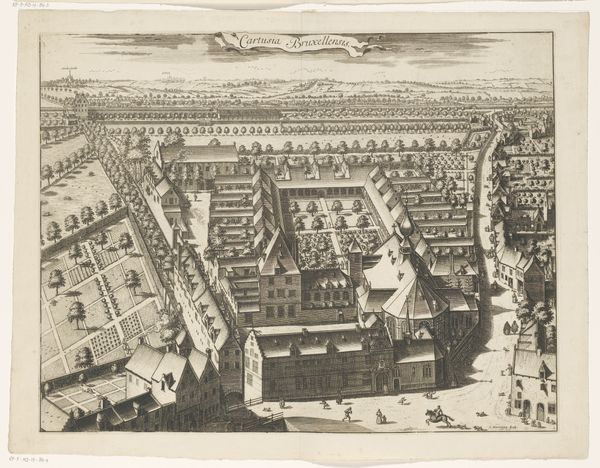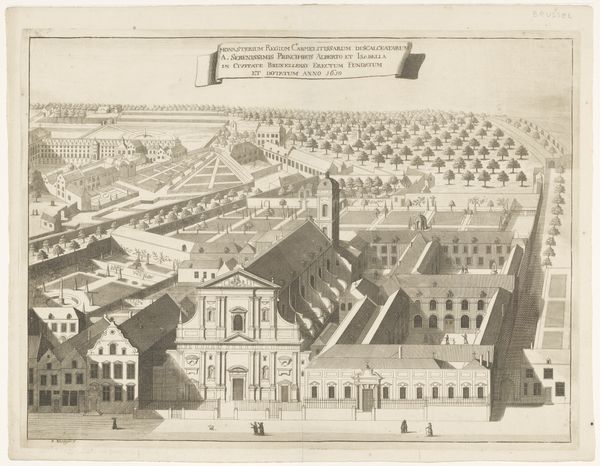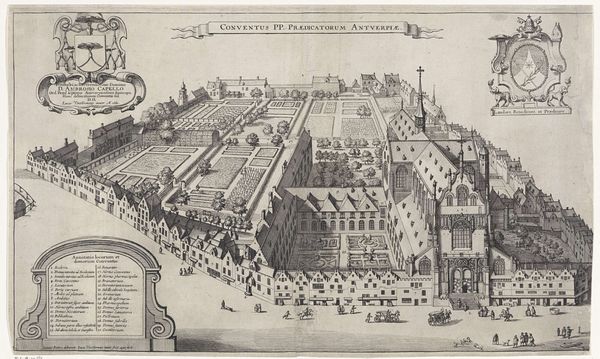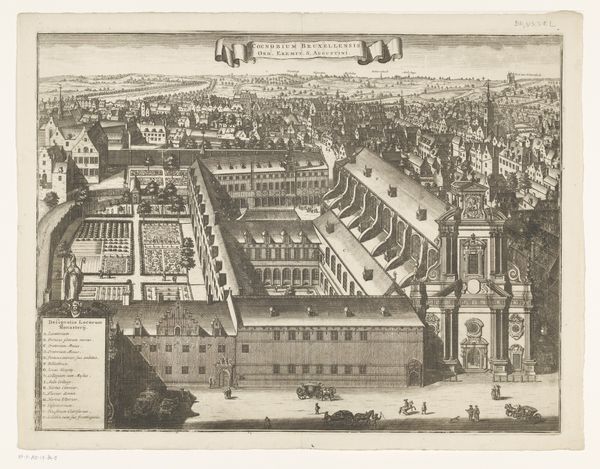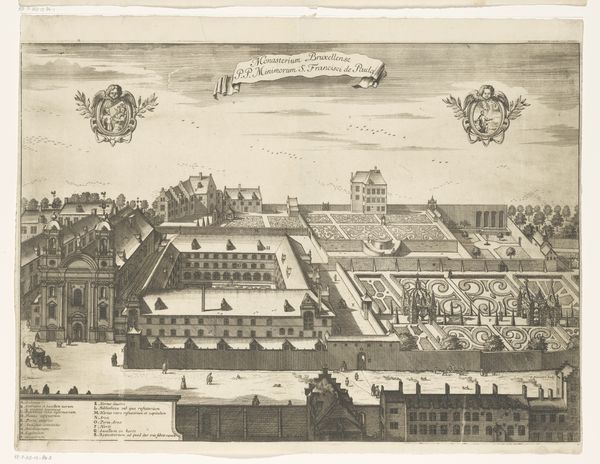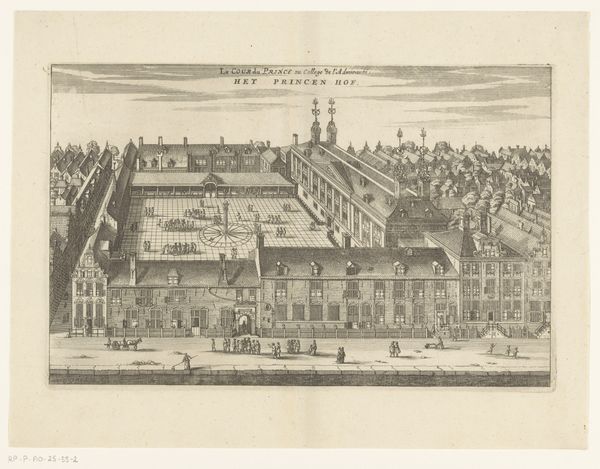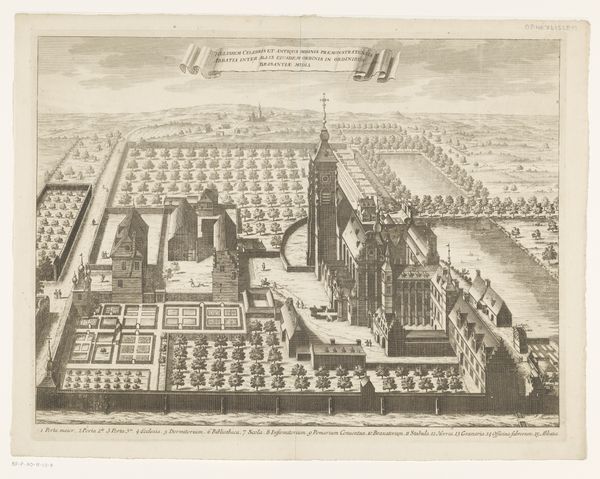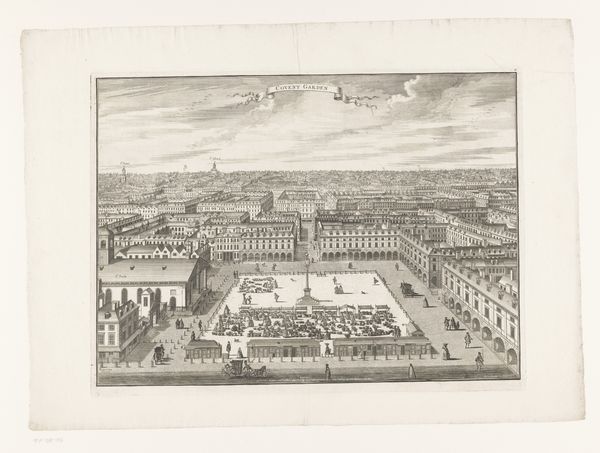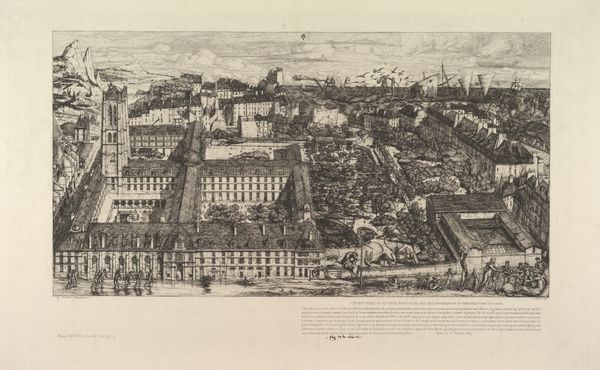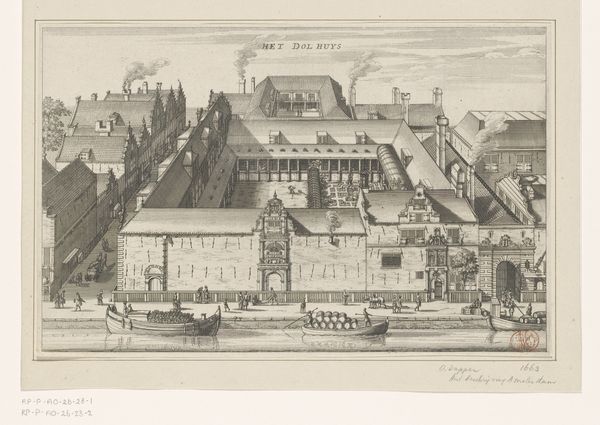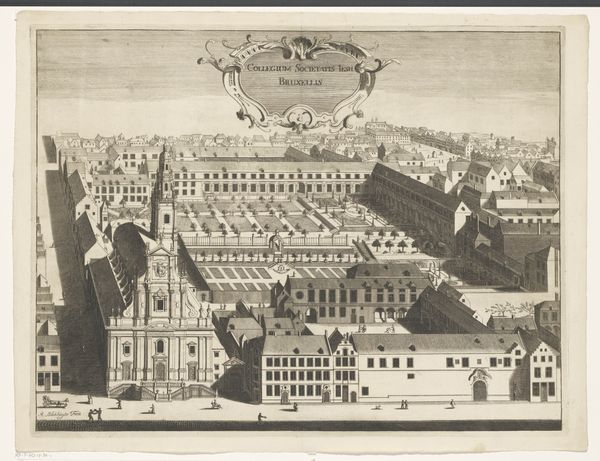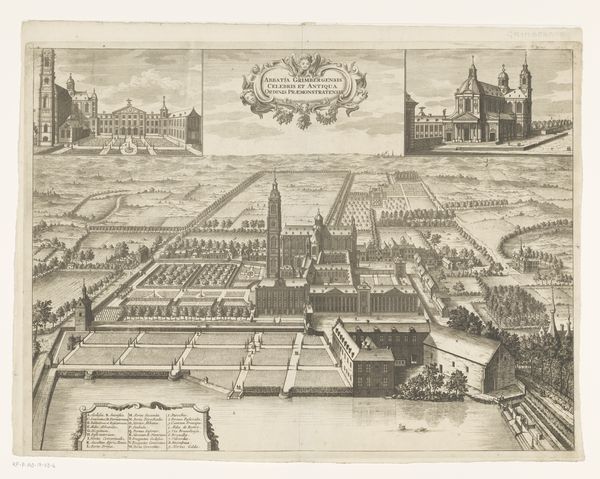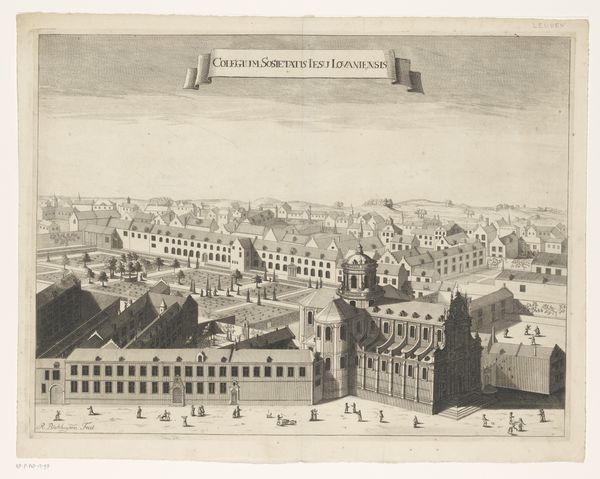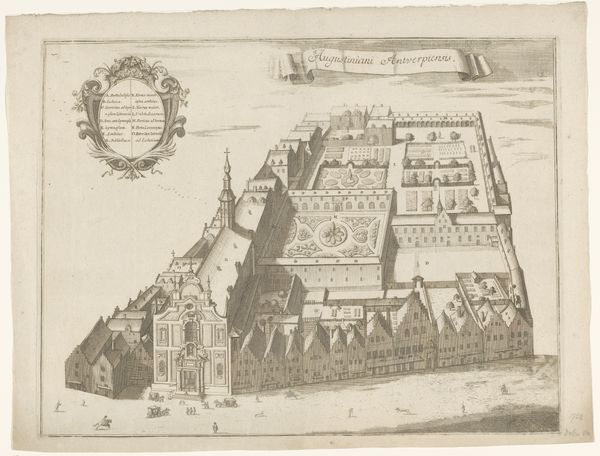
Gezicht op het Predikherenklooster te Antwerpen (rechterdeel) 1727 - 1734
0:00
0:00
drawing, engraving, architecture
#
drawing
#
baroque
#
cityscape
#
engraving
#
architecture
Dimensions: height 477 mm, width 374 mm
Copyright: Rijks Museum: Open Domain
Curator: Welcome. We're looking at "Gezicht op het Predikherenklooster te Antwerpen (rechterdeel)" a drawing by Reynier Blokhuysen, made sometime between 1727 and 1734. It depicts the Dominican monastery in Antwerp. Editor: Oh, my! From above, the whole place feels like a carefully planned fortress of serenity, almost daring you to find a weed out of place! It's very meticulous but... clinical. Curator: Cityscapes such as this served a very specific purpose during the Baroque period. They functioned less as art and more as a kind of documentation of power and urban order, especially within religious institutions. These images often showed not just buildings but also social order, reflecting the institution's position in the community. Editor: That explains the hyper-detailed rendering. Look at the tiny garden plots – each row precise, as if God Himself kept the ledger! But beyond the institutional image, doesn’t the sheer order also hint at a spiritual ambition? Almost like charting a path to enlightenment. Curator: Absolutely, order was key. Think of how these institutions relied on charitable giving. Presenting a clean, well-ordered facade would absolutely have played a part in attracting continued patronage. Cleanliness was next to godliness! Editor: I like how the human activity gives the artwork life; tiny figures going about their day near the church’s entrance or enjoying leisure in what might have been their vegetable gardens... you imagine conversations and the day's mundane worries even when the picture is so incredibly neat and precise! The drawing does make me think of monasticism - this retreat from daily hustle... to foster spiritual insight, of course, one would need that peace. Curator: Precisely, and note the materials. This is an engraving, a method that allows for very sharp lines, enhancing the image’s precision and detail—suitable for reproduction and dissemination among a wide audience. These prints often helped project an image of stability and grandeur across geographic locations. Editor: It’s fascinating how one artistic medium can subtly shift an entire message; I wonder what the community truly thought of it during its prime, back when such a rigid depiction felt almost necessary to reassure both God and everyone else! Anyway, what a reminder that the city, even then, was both stage and structure. Curator: Indeed. The piece speaks volumes about power, piety, and public perception. Its precise Baroque design not only showcases a building but promotes institutional ideas as well.
Comments
No comments
Be the first to comment and join the conversation on the ultimate creative platform.
